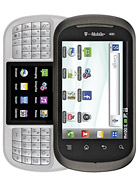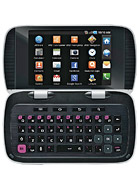Samsung to produce foldable phone this year, but not what you think…
The idea of a foldable smartphone, the holy grail of those in the flexible display business, is a difficult one, given that components that drive display pixels, batteries, and other component systems are also required to bend or flex thousands of times with no ill effects. Samsung’s recent debacle with the Note 7 can indicated just how even a small amount of stress can affect components. But where there is a will, there is a way, and the display space is not one known for a ‘can’t do’ attitude, and the device we are speaking about is not even the 1st iteration of a dual screen, foldable phone. We harken back to March, 2011 when Kyocera (6971.JP) released the “Echo”, a dual screen device that opened to ‘tablet’ mode, with a whopping 4.7” combined display. It did not sell well.
LG Display (LPL) also has its fling in the dual screen space with its October, 2011 “DoublePlay, that had a sliding slide-out keyboard that included a 2” capacitive touch screen, a sort of half-hearted attempt at a dual screen phone. It did not sell well either, and not to be outdone, Samsung itself released the very strange “Doubletime” smartphone in late 2011, which opened to a second screen and a keyboard. While dual-screen smartphones seemed to fade into obscurity after 2011, Russian smartphone manufacturer Yota (pvt) gave us the YotaPhone in November of 2013, followed by the YotaPhone 2 a year later, both of which had an electrophoretic secondary screen. It is no longer available.
Back to present day, with Samsung’s alleged foldable smartphone, which is not foldable, as the Project Valley concept phone below shows, but is a dual 5” screen phone that opens to a ‘tablet mode’, using a hinge between the screens. Samsung is using this early iteration of a foldable phone to gain insight into how consumers will use such a device and will not be mass produced. In fact, component manufacturers are expecting only 2,000 to 3,000 units to be produced this year, and will be distributed to major brands for evaluation, with the potential for larger volumes toward the end of the year. With both screens being almost bezel-less, the device will set the tone for what eventually is expected to become an actual flexible, foldable display, as shown in Fig. 5, but we expect such a truly foldable display will not be available for mass production until 2018 at the earliest, and more likely 2019/2020. While most are concerned as to the date when such a device will be released, we are more concerned as to its value to consumers, who will be the ultimate arbiters of the concept’s success. If the device does little to help consumers with smartphone functions, it will go into the nnuls of ‘non-practical’ but interesting mobile display technology, rather than selling millions or billions. Samsung was smart enough to bring the conformable screen to its Galaxy line from the standpoint of providing a number of functions that allow the user to see information without having to turn on the phone, a very plausible application of the display. Hopefully, this early iteration will give them the insight to do the same with a truly flexible display down the road.





 RSS Feed
RSS Feed